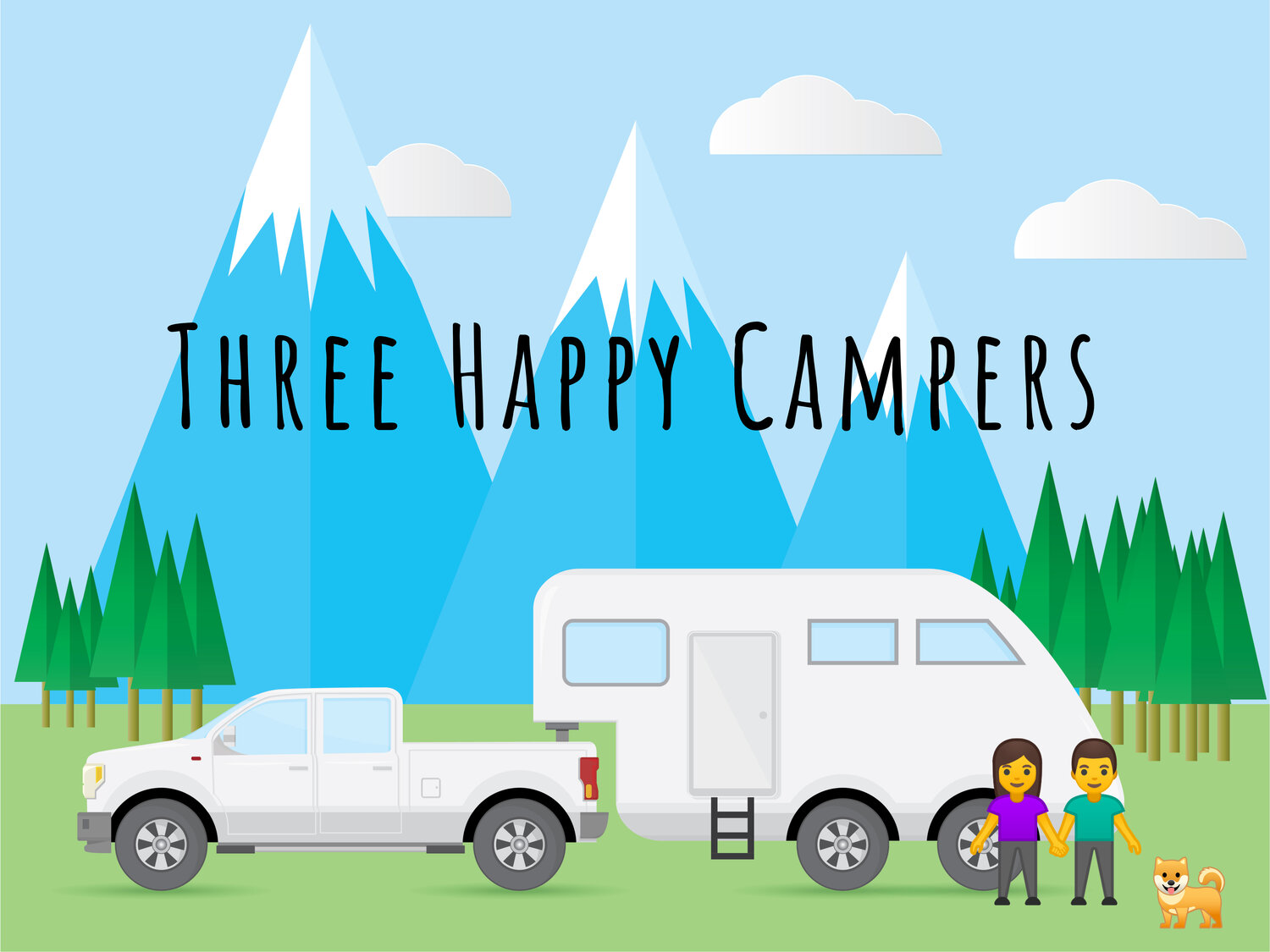Hopping Through the Heartland!
Hi Everyone!
Since our last update in Michigan, we've quickly traveled along the coast of Lake Superior in Wisconsin and Minnesota and through the middle of North Dakota. While briefly in Wisconsin, we rode a ferry to see the beautiful Apostle Islands National Lakeshore. In Minnesota, we enjoyed the historical aspects of Duluth, and enjoyed many nature stops along the North Shore Scenic Drive. North Dakota had two highlights; spending time with the owner of Red Trail Vineyard while we camped there one night, and visiting Theodore Roosevelt National Park, the park named in honor of thr “Conservation President” and where the bison picture above was taken.
This leg of the trip was seasoned with various encounters with residents in small towns, which was fun because we enjoy interacting with the locals. Many of our dining-out experiences in towns with fewer than 200 people have been amusing. One time we chatted with a man and his son who had just returned from paying respects to their dying grandmother. The priest had been called, and she expectantly would die any minute. While the men were there, she completely woke up and spryly got out of bed to take family photos with her grandsons! Now with us, they were still relishing in the miracle— "…if you believe in miracles," the man said…" or who knows!…maybe she just needed a 30-hour nap!" 😄 Another day, an older man playing an electronic casino machine in a saloon won $1,400 and paid the tab for the whole place. (All four of us!) 🤑 In North Dakota, a delightfully dapper 75-year-old corn farmer/vinedresser went with us to dinner and introduced us to nearly everyone in the restaurant/saloon, including a lovely friend from high school who was revisiting her hometown. She graciously invited us to stay on her property when we got to Idaho—and she meant it…we got a call a few weeks later asking where we were.🤠 Lastly, there was the man in a restaurant who told all the patrons about his fantastic pheasant hunting dog—a "puppy" that happened to be in the car. "She's a real beauty; want to see her?" The manager: Oh, a puppy? I love puppies! Yes, let's see her! He then brought into the restaurant an 11-year-old, worn-out, partially grey pointer for all of us to admire. Hmm…😏
In this portion of our trip, we were surrounded by water—a lot of it, so forgive us if we have told you everything you never wanted to know about lakes, bridges, and ships! We did reach dry land in North Dakota and are still on our way to Montana. When we get there, we have family coming to stay with us to visit Glacier National Park. We are very excited about their upcoming visit.
We hope you are all doing great, and we look forward to hearing from you anytime! Much love to you all! Glenda and Craig (and Clay) 🤸🏻♀️🤸🏻♂️🐕
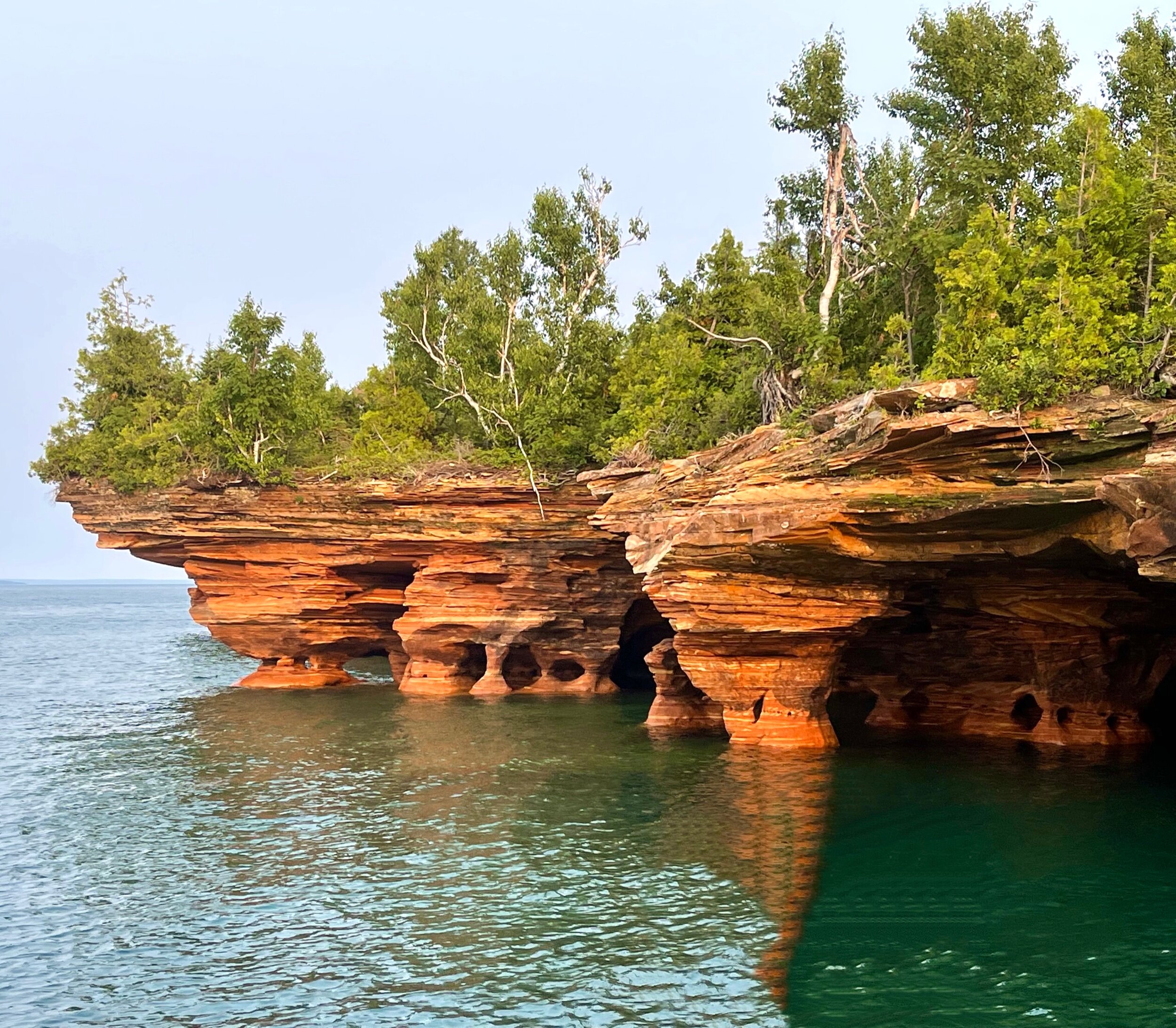
Apostle Islands National Lakeshore includes a beautiful stretch of shoreline and 21 islands at the northernmost tip of Wisconsin on Lake Superior. This area is named after the 12 Disciples (or Apostles) in reference to the 12 largest islands here. According to the National Park Service, some of these islands have the largest concentration of black bears in North America, and since the bears can swim so well, they may be seen on any of the islands in the area. 🐻

While visiting the Apostle Islands, we learned about the invasive sea lamprey. These things are what nightmares are made of. The 14"-24"-inch long blood-suckers have a large, oral disk filled with sharp teeth surrounding a razor-sharp tongue that burrs holes through a fish's scales and into their sides. These parasites came from the Atlantic Ocean to the Great Lakes about 100 years ago through a single canal built for ships, around Niagra Falls. Before their invasion, the US and Canada harvested about 15 million pounds of lake trout in the upper Great Lakes each year. By the early 1960s, the catch had dropped 98%, and during the time of the highest sea lamprey population, up to 85% of the living fish had sea lamprey attack wounds. Due to the US and Canada's various efforts to control sea lamprey, the fish population has recovered, but managing them continues to be an ongoing project today. And speaking of nightmares, sea lampreys attach to humans when given the opportunity. 😨
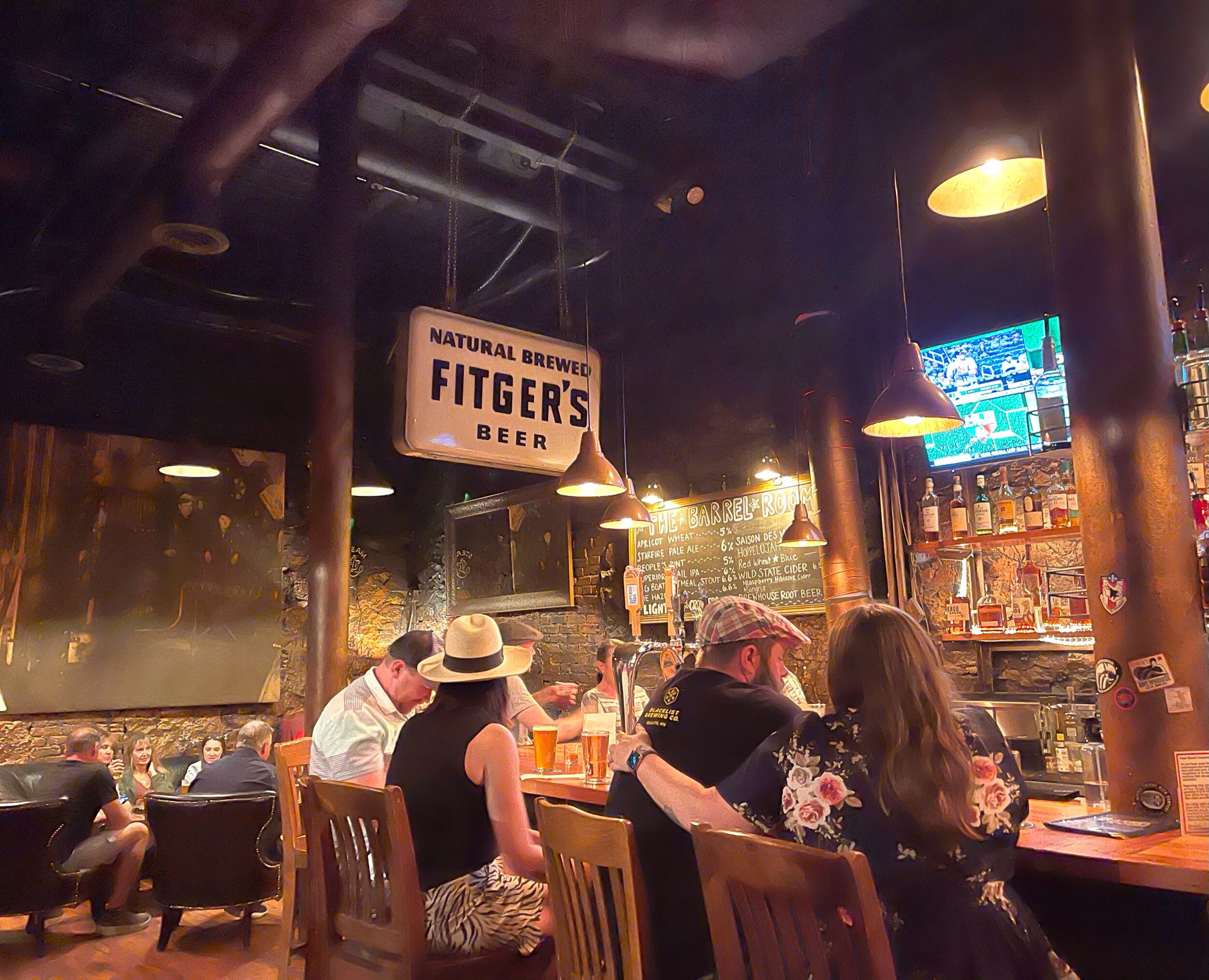
After a major national economic downturn in 1857, an unemployed Duluth, Minnesota resident with brewing experience and a few of his friends had a capital idea—brew beer. 🍺 One source said of them, "The absence of malt and hops and barley did not at all embarrass those stout-hearted settlers." Years later, Fitger's Brewing Company became a major local employer and even stayed open during prohibition by shifting to soda and candy bar production. Fitger's Brewery historical complex (built in 1886) stretches 720 feet along Lake Superior's shoreline. Today, the building is an indoor mall with shops, a brewery, restaurants, nightclubs, a hotel, and a museum on the brewery's history.
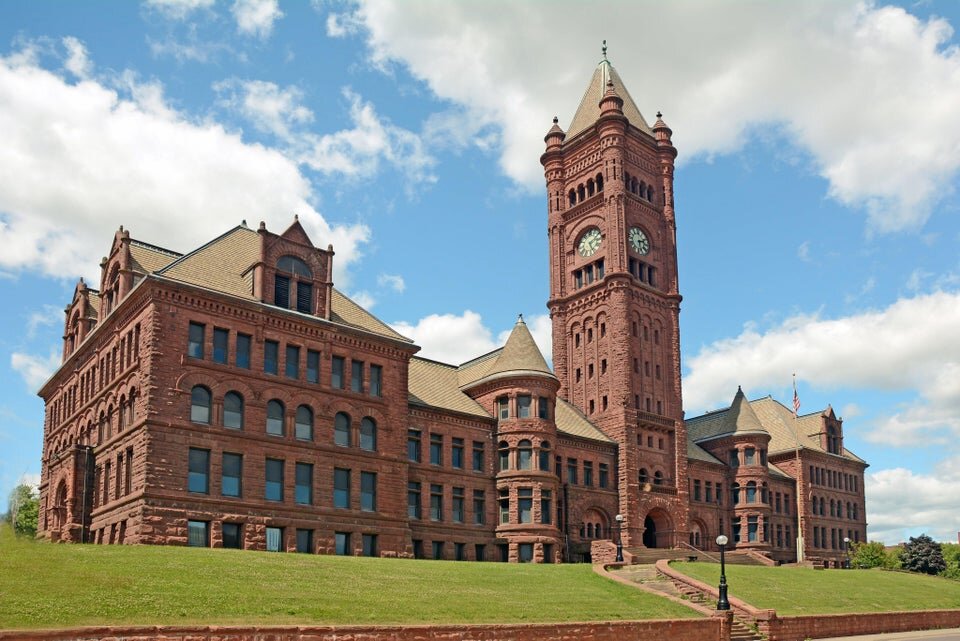
Duluth, Minnesota, is a port city with an early history of economic challenges and some very notable high points. Because of its position on Lake Superior, new railroads, and rich natural resources, Duluth was the fastest-growing city in the country in 1870. Shortly before 1870, Duluth's newspaper's founder boasted in a public speech that Duluth was "The Zenith City of the Unsalted Seas!" At the time, he wasn't entirely wrong about the city's bright future, but most people found great amusement in his declaration. Because the statement was so laughably presumptuous, the designation stuck, and to this day Duluth's tongue-in-cheek nickname remains, The Zenith City.
During a period of opportunity and prosperity, the town erupted with beautiful architecture, most of which still stands today. Old Central High School, built in 1892 is still owned by the school system in Duluth. (photo taken from Reddit.com.)

In the early 1900s, there were more millionaires per capita in Duluth, Minnesota, than in any other city in the world. Chester and Clara Congdon were among Duluth’s most prominent. In 1905, construction began on their 27,000 sq. ft. Glensheen Mansion on Lake Superior. In today’s dollars, construction costs were over 22 million and included every imaginable luxury of the day, including showers equipped with 5-head shower sprayers. (Not bad for 1905!) Elisabeth Congdon, the last living heir of Chester and Clara’s seven children, never married and lived in the house until she died in 1977. Years before her death, Elizabeth donated Gleensheen Mansion to the University of Minnesota. Today, U of M operates the home as a museum and special events venue, but nearly every aspect of the home’s interior remains as it did when the Congdns lived there.
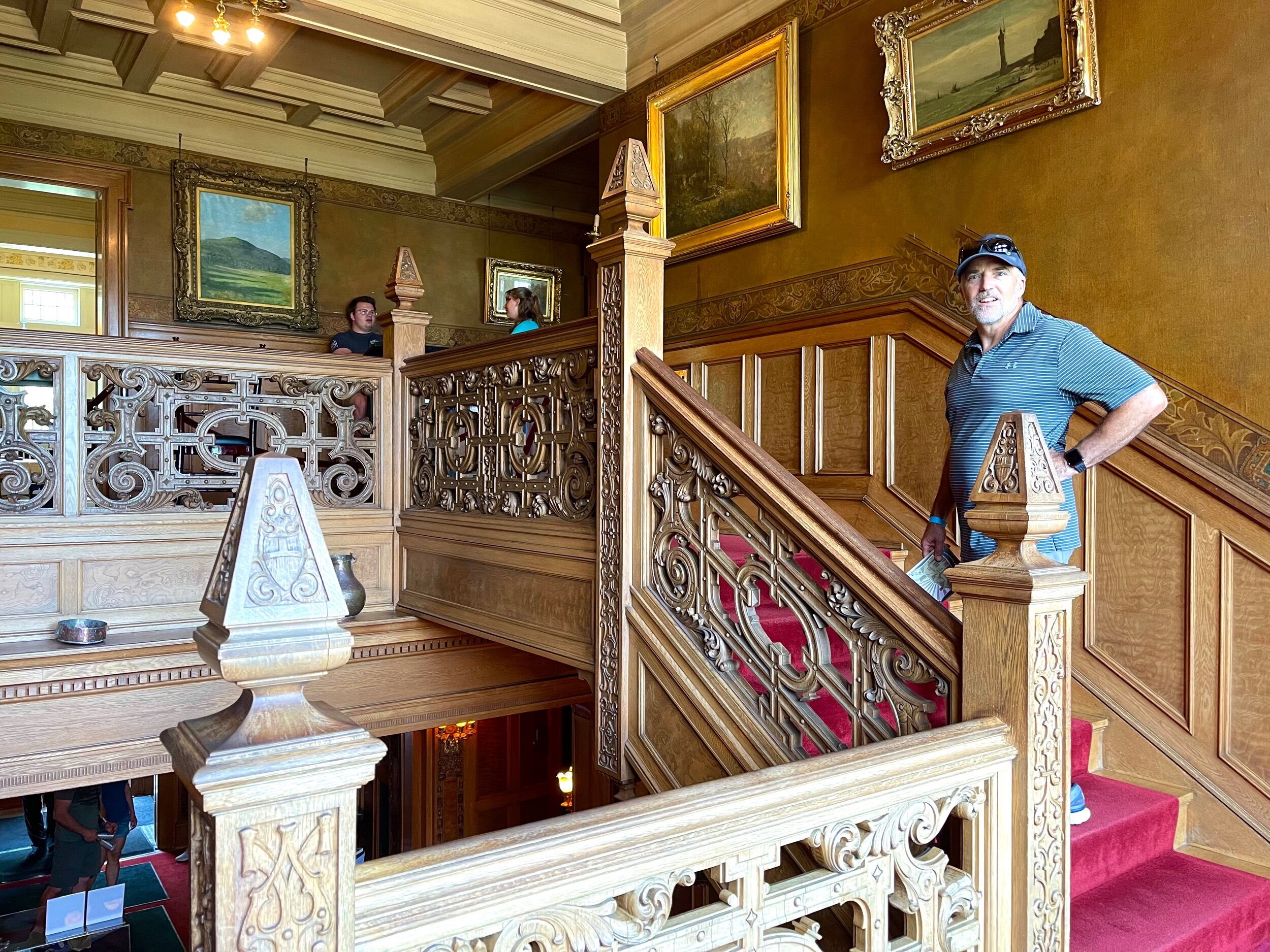
Chester Congdon enjoyed remarkable accomplishments personally and professionally, and for Minnesota, as a State Representative. His daughter, Elizabeth, was also an active philanthropist well into her old age. Unfortunately, much of the Congdon legacy is overshadowed by Elizabeth's murder, and the murder of her nurse, in the Glensheen Mansion in 1977. The nurse was killed with a candlestick on this staircase before 83-year old Elizabeth was murdered in her bedroom. The prime suspect was Elizabeth’s adopted daughter, Marjorie Congdon, who stood to inherit 8.4 million dollars. Marjorie was acquitted, although evidence linked her with other felonies and murders after the death of her mother.
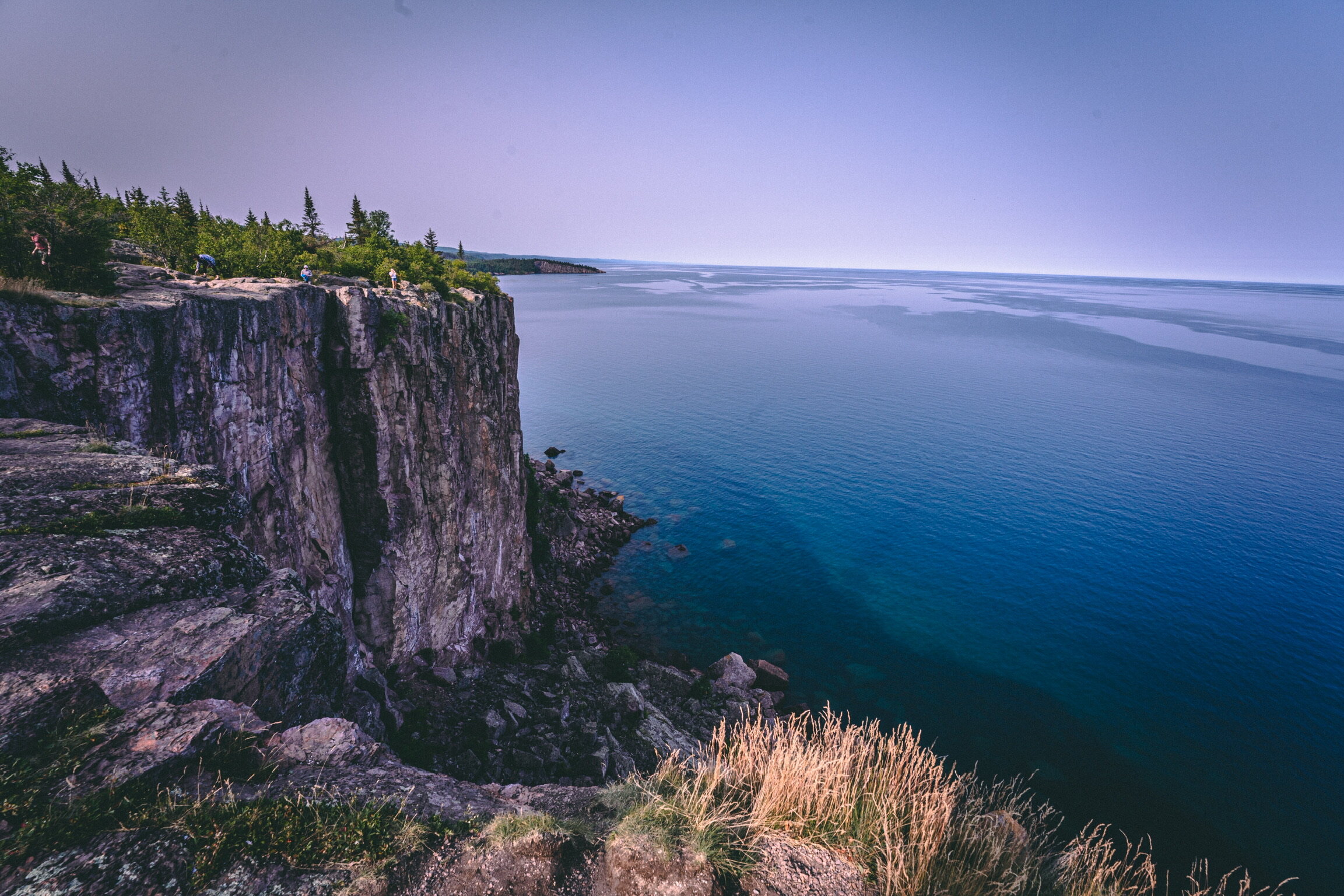
The North Shore of Lake Superior is a scenic state highway that runs from Duluth, Minnesota to Canada. Lake Superior is the largest of the Great Lakes—by a lot. With a surface area of nearly 32,000 miles and areas as deep as 1,332 feet, Lake Superior could hold all the water in lakes Huron, Michigan, Ontario and Erie, plus three more Lake Eries.
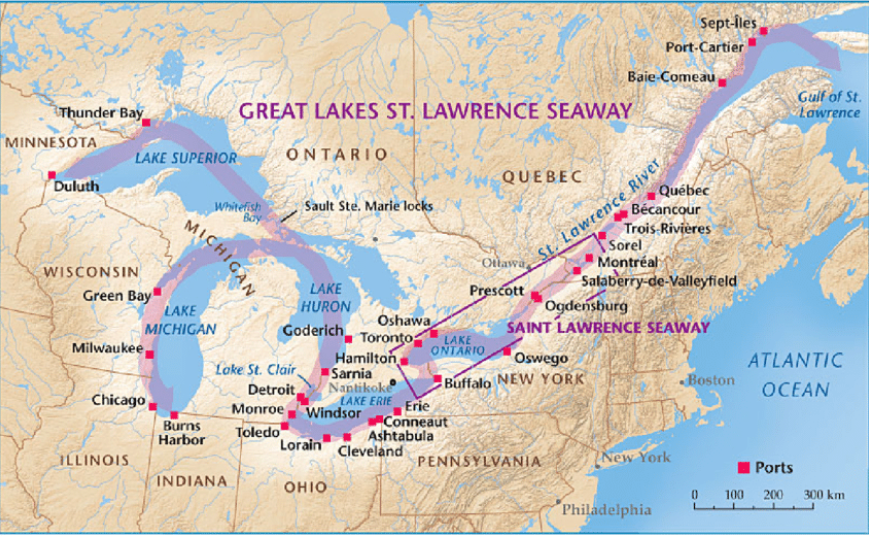
Lake Superior is not just special because of its size; it connects the heartland (the midwestern states) to the global economy via the St. Lawrence Seaway. This channel flows from Duluth to the Atlantic Ocean. The St. Lawrence Seaway we see today is the result of 50 years of discussions, negotiations, and planning between Canada and the United States. "Highway H2O" is 2,038 nautical miles and takes about 8.5 days to travel, with an average speed of 12 mph.
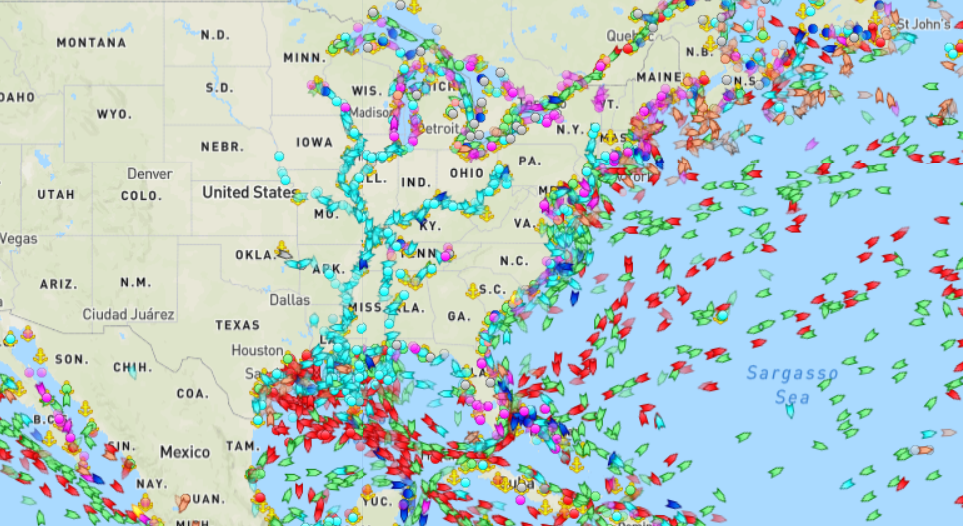
If you’ve never thought about how much we depend on water transit, this map from a few days ago shows ships currently on the water in and near the US. On land, it's easy to forget that at any given moment there are around 50,000 merchant ships crisscrossing the oceans, stuffed with goods, and another 40,000 non-merchant vessels. This cool website shows real-time traffic on the waterways of the world. Click this link and see whats going on right now! https://www.marinetraffic.com

Duluth’s ports, along with the neighboring ports of Superior, Wisconsin, make what is known as the Twin Ports. Together, they are considered the largest freshwater port in the world. The Ariel Lift Bridge at Duluth’s Ship Canal is a major landmark and attraction in the area. In this photo, cars pass over the water on the bottom roadway portion of the bridge.

The roadway portion of the Ariel Lift Bridge lifts 135 feet into the air when ships pass through. Once the ship has cleared the bridge, the roadway decends down to land level again for commuting cars. A 1,000-foot boat arriving to port came through as we were here. An online ship schedule makes it easy for visitors to plan to see the action from Canal Park along Lake Superior—and if you’re not in the area, you can watch the Duluth Harbor Bridge Cam online! 😁
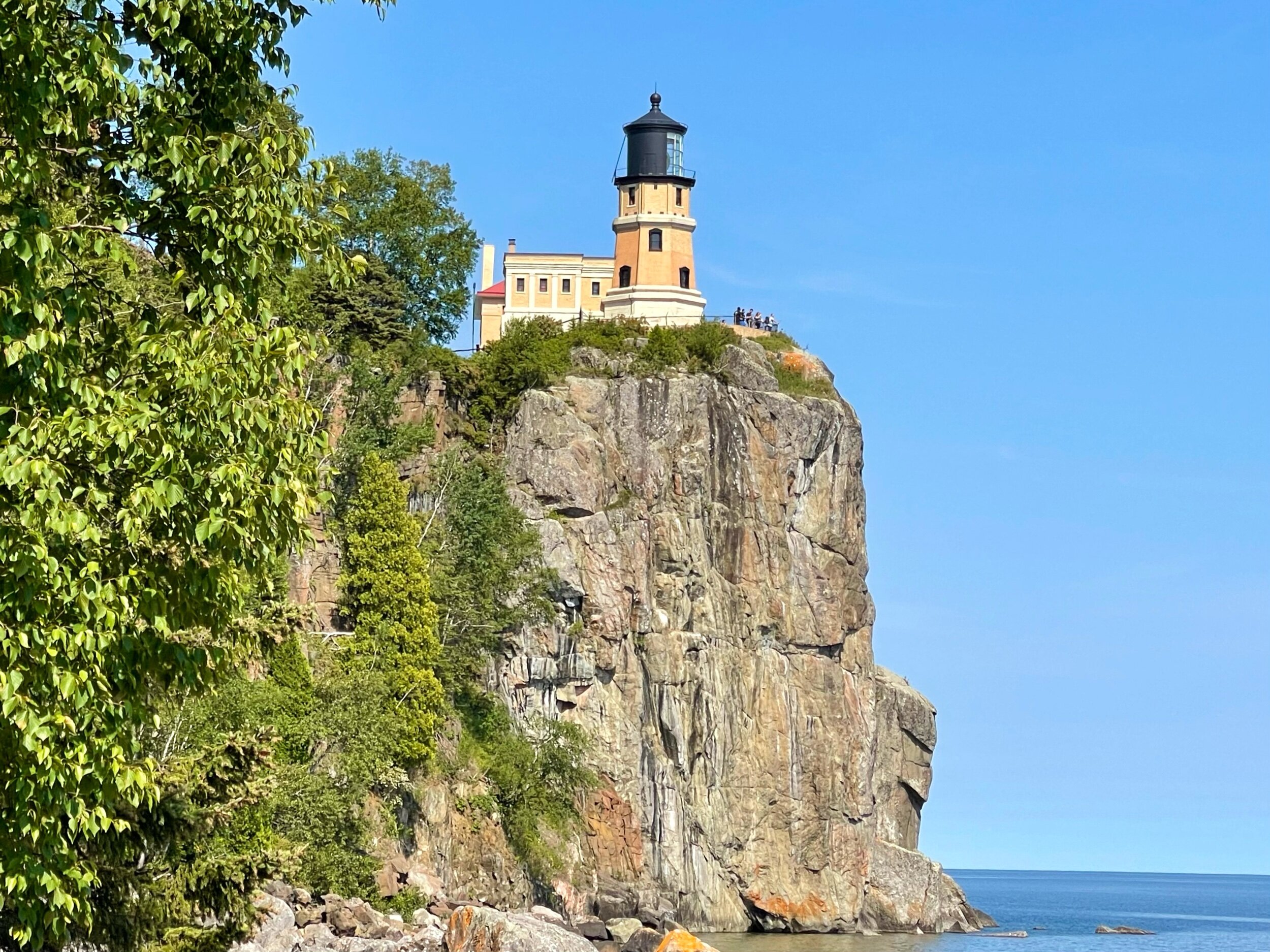
Split Rock Lighthouse along the North Shore was built specifically because of one storm in November 1905. During the storm, the temperature dropped to -13 degrees, winds were more than 60 mph and waves exceeded 30 feet. Twenty-nine ships wrecked, 36 men died in the icy waters, and shipping losses topped 3.5 million, in 1905 dollars. Historians estimate that 350 ships have been lost to Lake Superior since the first recorded shipwreck in 1816.

For Georgia residents, it may be of interest that Duluth, Georgia, was named after Duluth, Minnesota. The Georgia city is referred to as Duluth, Minnesota’s "sister city," and there are no other cities in the nation by this name. How the name got from Minnesota to Georgia is a bit of a long story, but it involves an inside joke linked with some humorous events in Duluth, MN, when the railroad system came through both of the small towns in the same year.

You’re probably aware that the great Mississippi River ends at the Gulf of Mexico, but you may have never asked yourself where, exactly, the Mississippi River is flowing from. We hadn’t either, but we learned that many others before us were obsessed with this question and couldn't figure it out. Finally, an Indian Chief led explorers to Lake Itasca, and there, the head of the Mississippi River was gloriously discovered in Park Rapids, Minnesota, in 1832. Itasca State Park is built around this locally famous place, and we camped here for a few days. Itasca is Latin for "true head." This small rock dam marks the very spot in Minnesota where Lake Itasca ends, and the Mississippi River begins. And now you know…😉

There she is in all her glory—the first few flowing feet of the Mississippi River. And there he is, always thrilled to pose for a picture. 😉
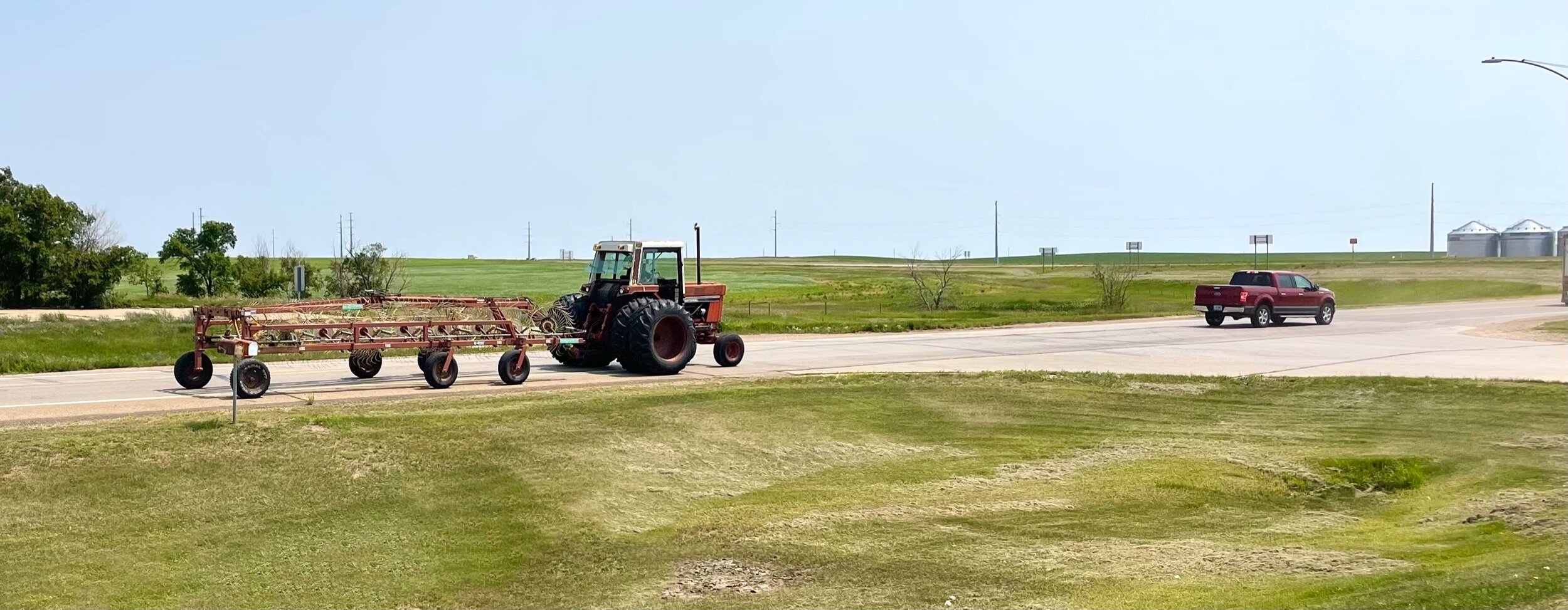
After leaving Minnesota, we made our way to North Dakota. On our way through Fargo, we had certainly arrived in Farmland, USA. I took this picture of the traffic when we stopped for gas. Traffic here looks much different than in Atlanta. 🚜
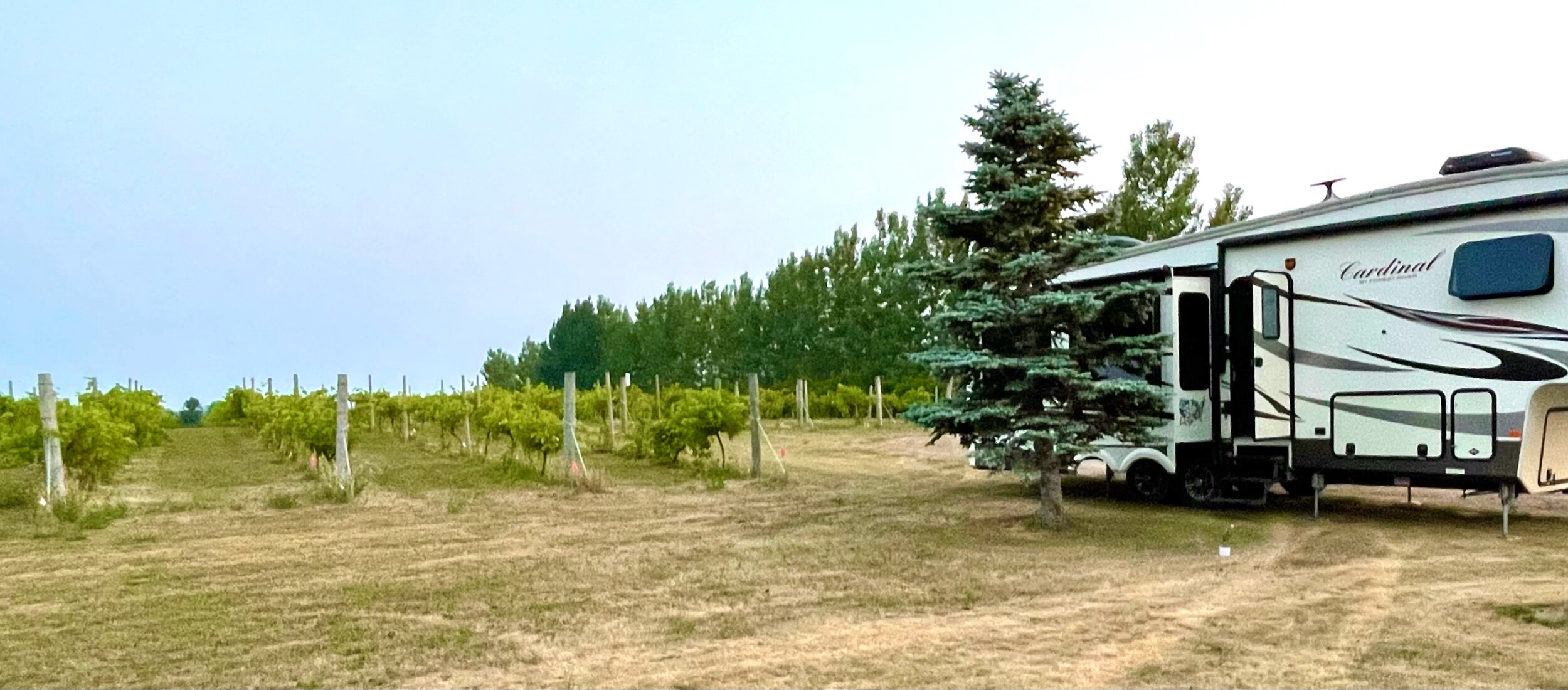
In Buffalo, North Dakota we camped one night at a Harvest Host location, Red Trails Vineyard. The owner, Rodney, was absolutely the best host. We enjoyed wine tasting at this lovely vineyard and then the three of us went to dinner at the only restaurant/saloon in town. I hope to come through here again sometime just to see Rodney. 😊
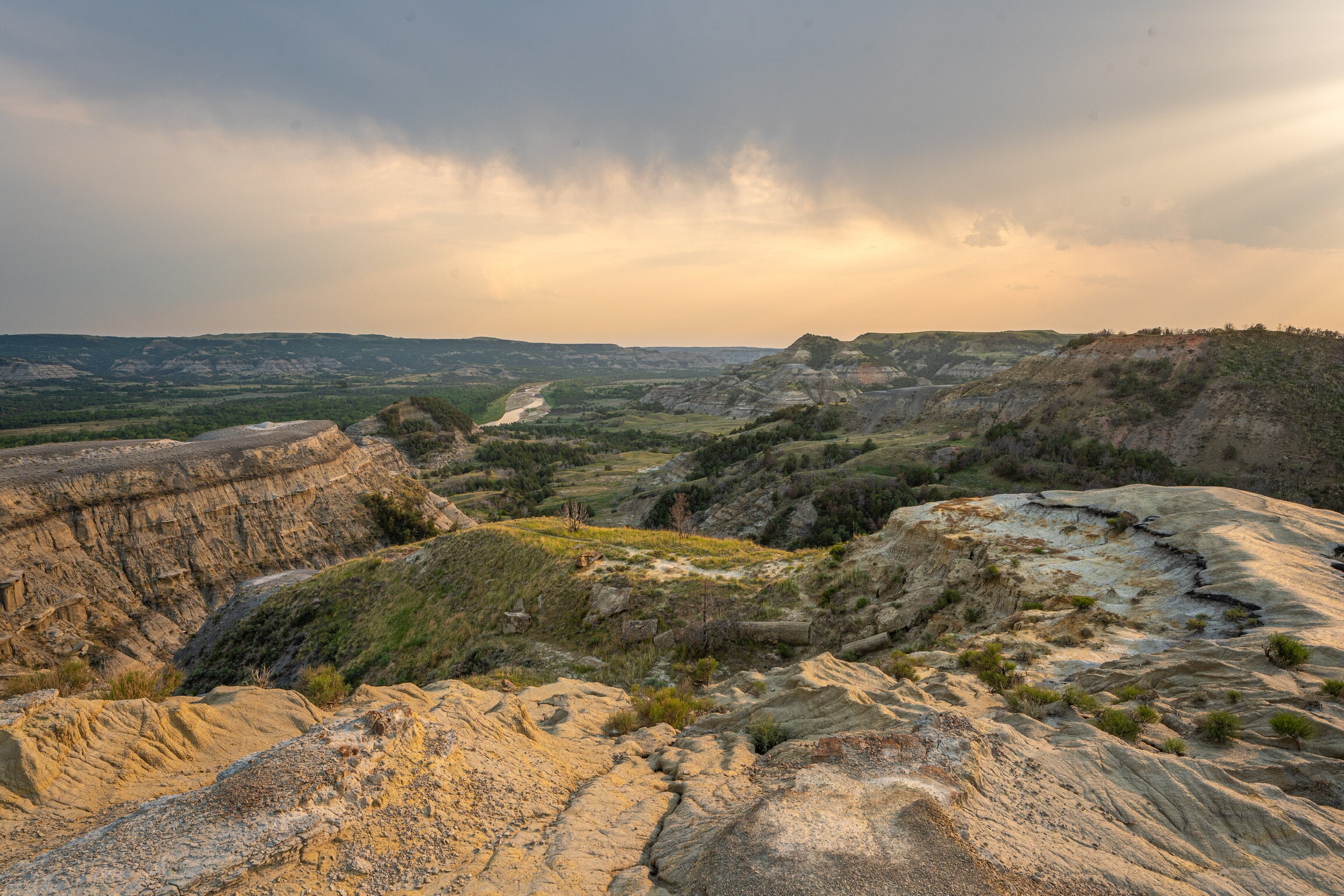
Theodore Roosevelt National Park. Teddy Roosevelt came from New York to the badlands of North Dakota in 1883 for a time of restoration after a series of tragic personal events, namely the death of his mother and his wife on the same day. He ranched, hunted, and lived simply. But even as he himself hunted extensively, he became aware of the ability to exhaust the national resources. Roosevelt felt the decimation of bison and the eradication of elk, bighorn sheep, deer, and other game species indicated man's perception that our natural resources were endless.
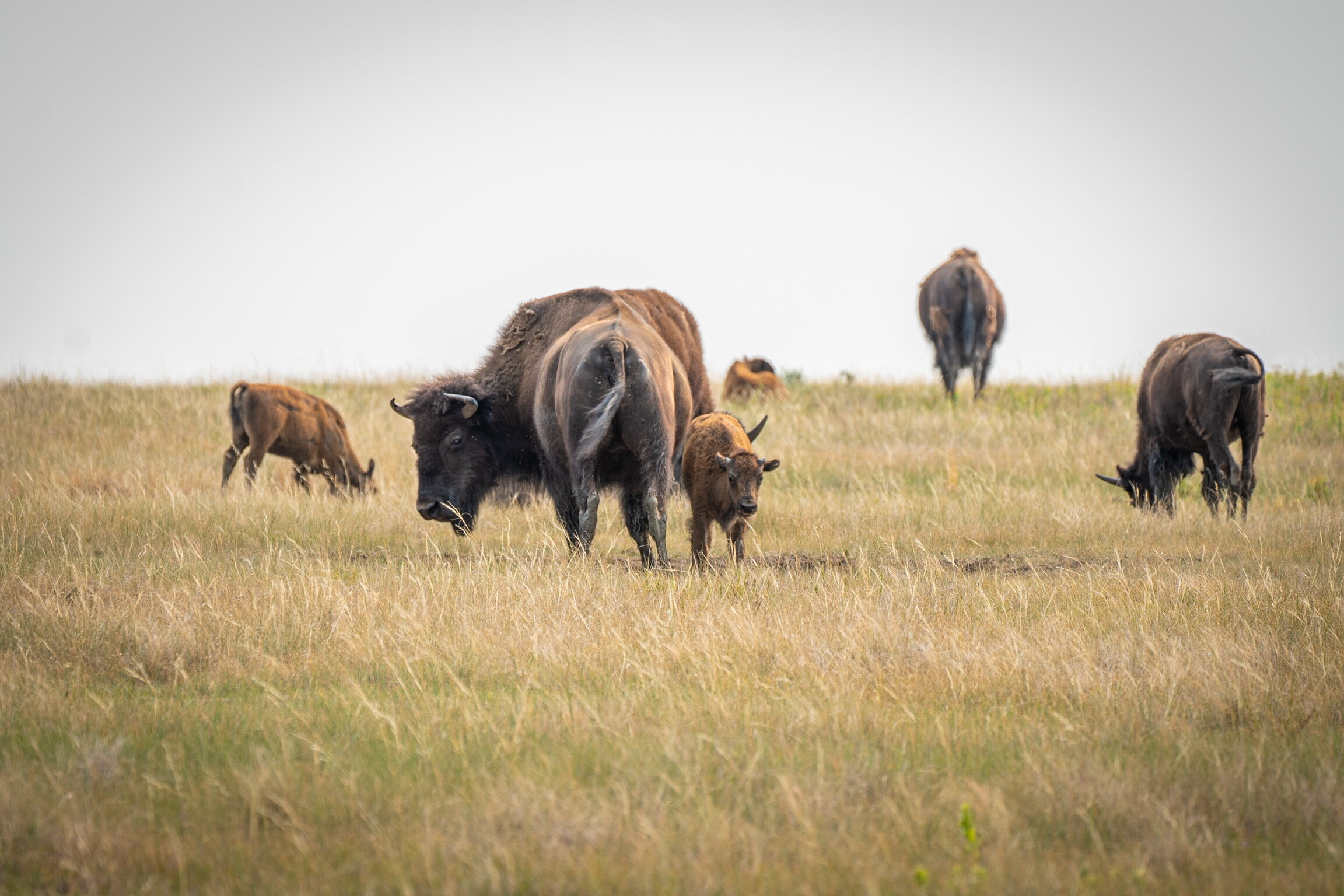
Roosevelt turned a love of hunting and the outdoors into a passion for conserving our natural resources for future generations. Later as president, he designated more than 230 million acres of national parks, forests, monuments, and wildlife reserves around the country. 🐃 Craig captured this special photo of a mom bison and her calf in serene park while hiking early one morning.
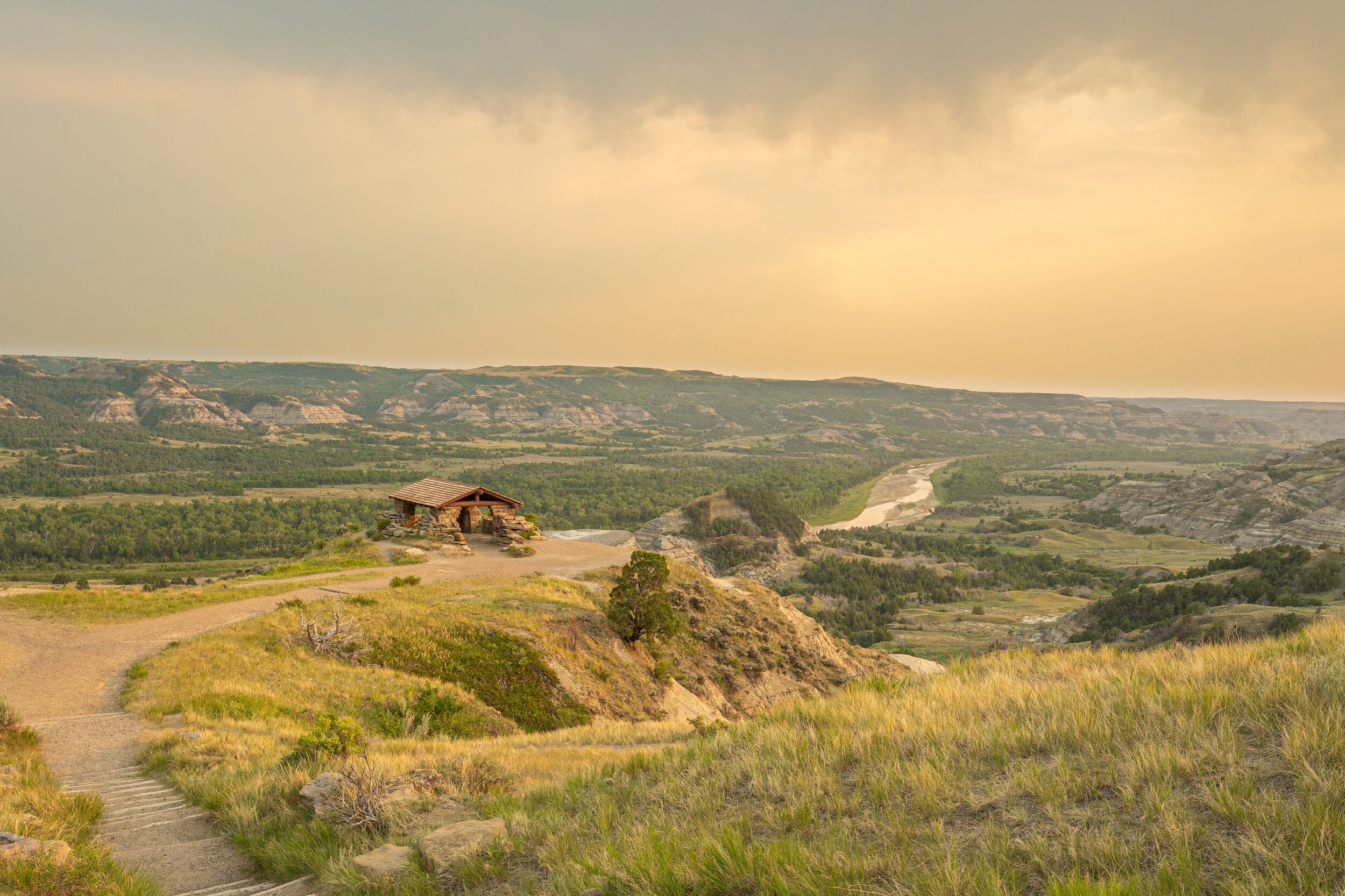
When Roosevelt initially traveled to his new Dakota ranch, he thought he might spend the remainder of his days as a cattleman. Years later, Roosevelt, the man known as the "Conservation President” said, "I would never have been president if it had not been for my experiences in North Dakota." As you may imagine, that’s a very famous quote in these parts, and Teddy Roosevelt is loved and wildly celebrated here. In 1978, one hundred and ten acres around Teddy Roosevelt's midwestern home became a national park named for him.
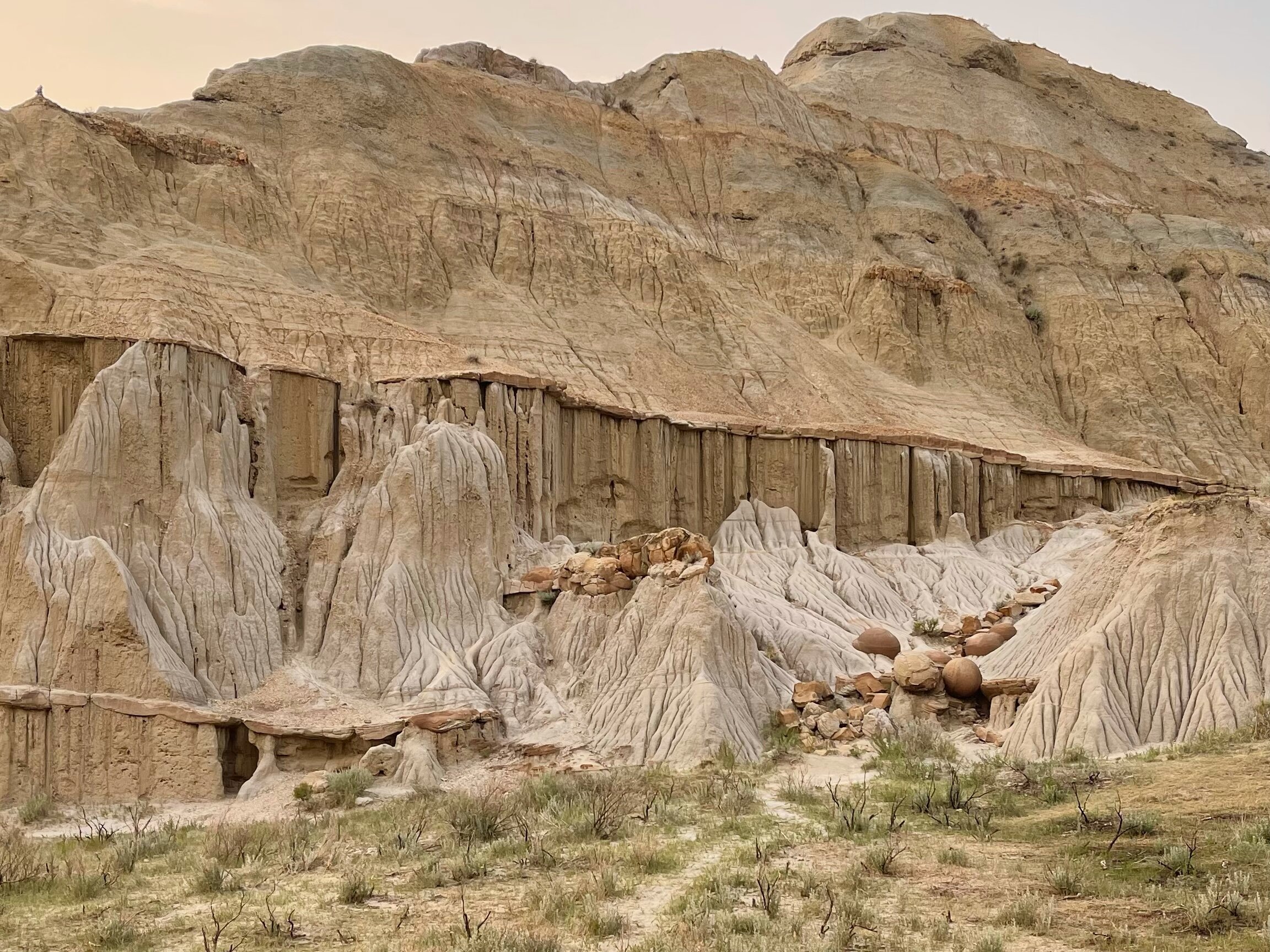
The park is truly beautiful with various unusual landforms.

Wildlife is abundant at Roosevelt Park. Our first evening here, we spotted this wild horse family taking a walk in the badlands.
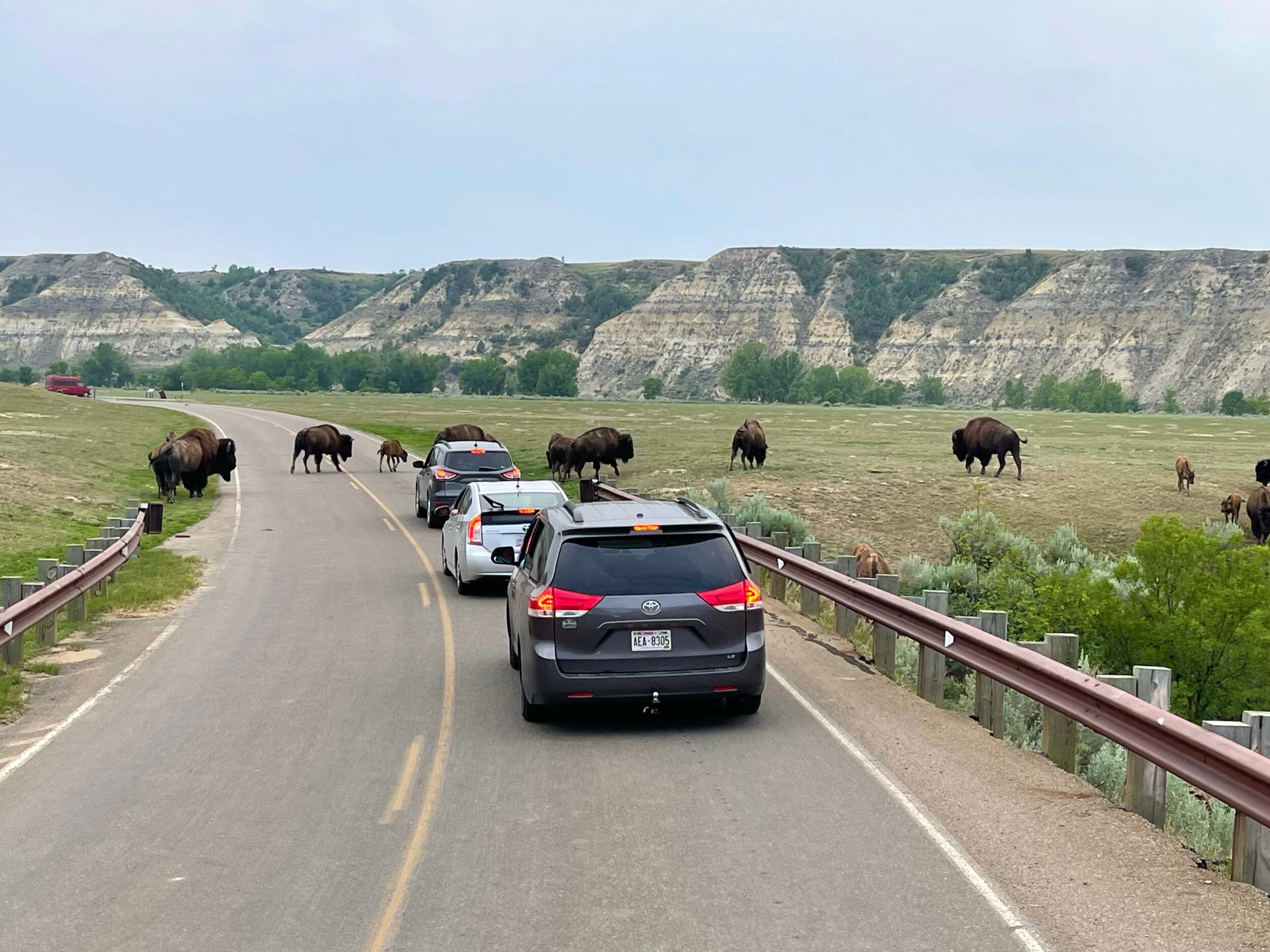
North America once contained 25–30 million bison. Due to heavy hunting, there were fewer than 100 bison by the late 1880s. After protection efforts were put into place around 1907, bison made a comeback and are no longer on the endangered list in America. In this particular park, there are about 500. It seems that stopping traffic is their favorite pastime…and we loved it. 😀
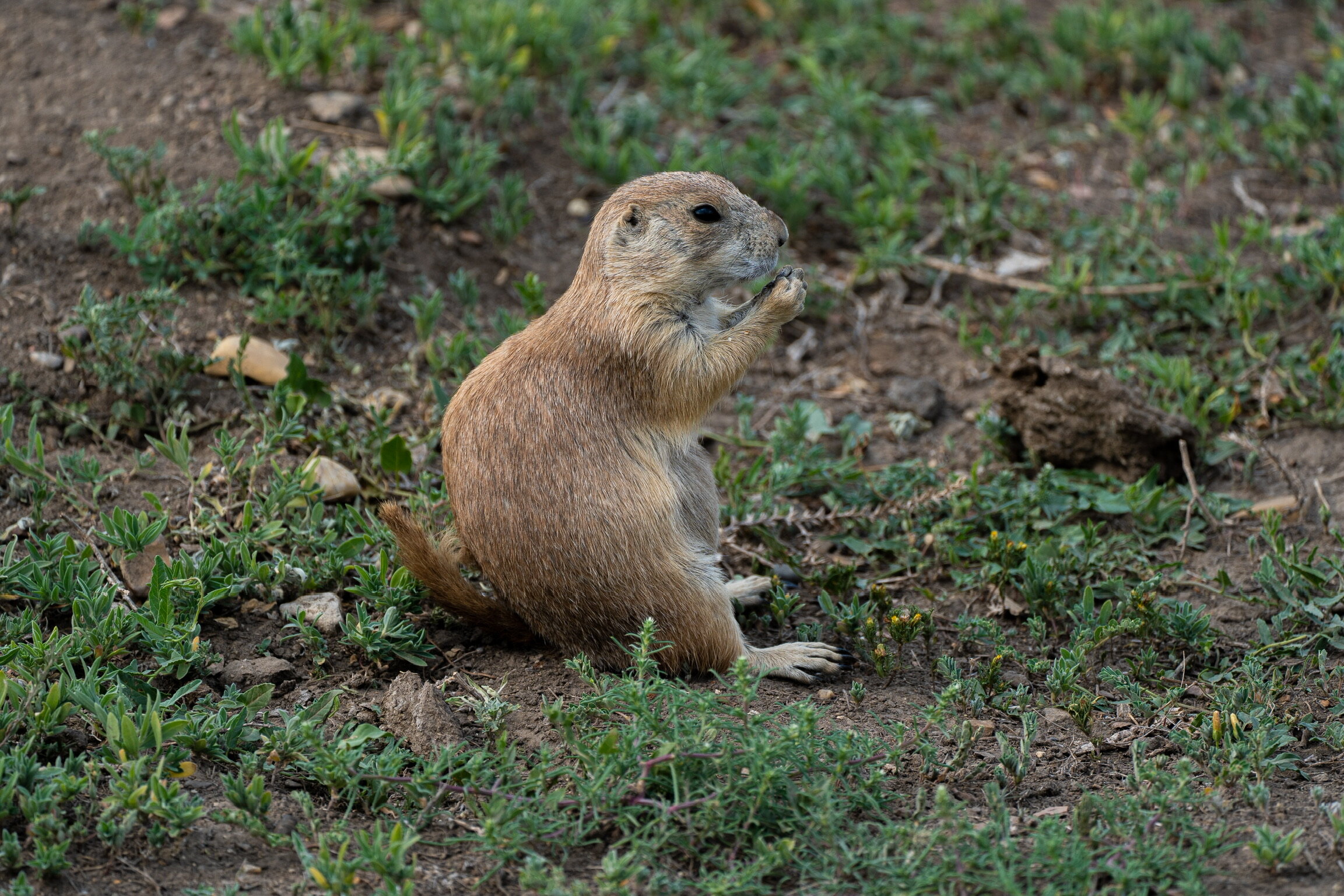
We had not been in the park very long when we came upon a prarie dog town—which is the name for a colony of prarie dogs. This particular one decided to have a seat before enjoying his lunch.
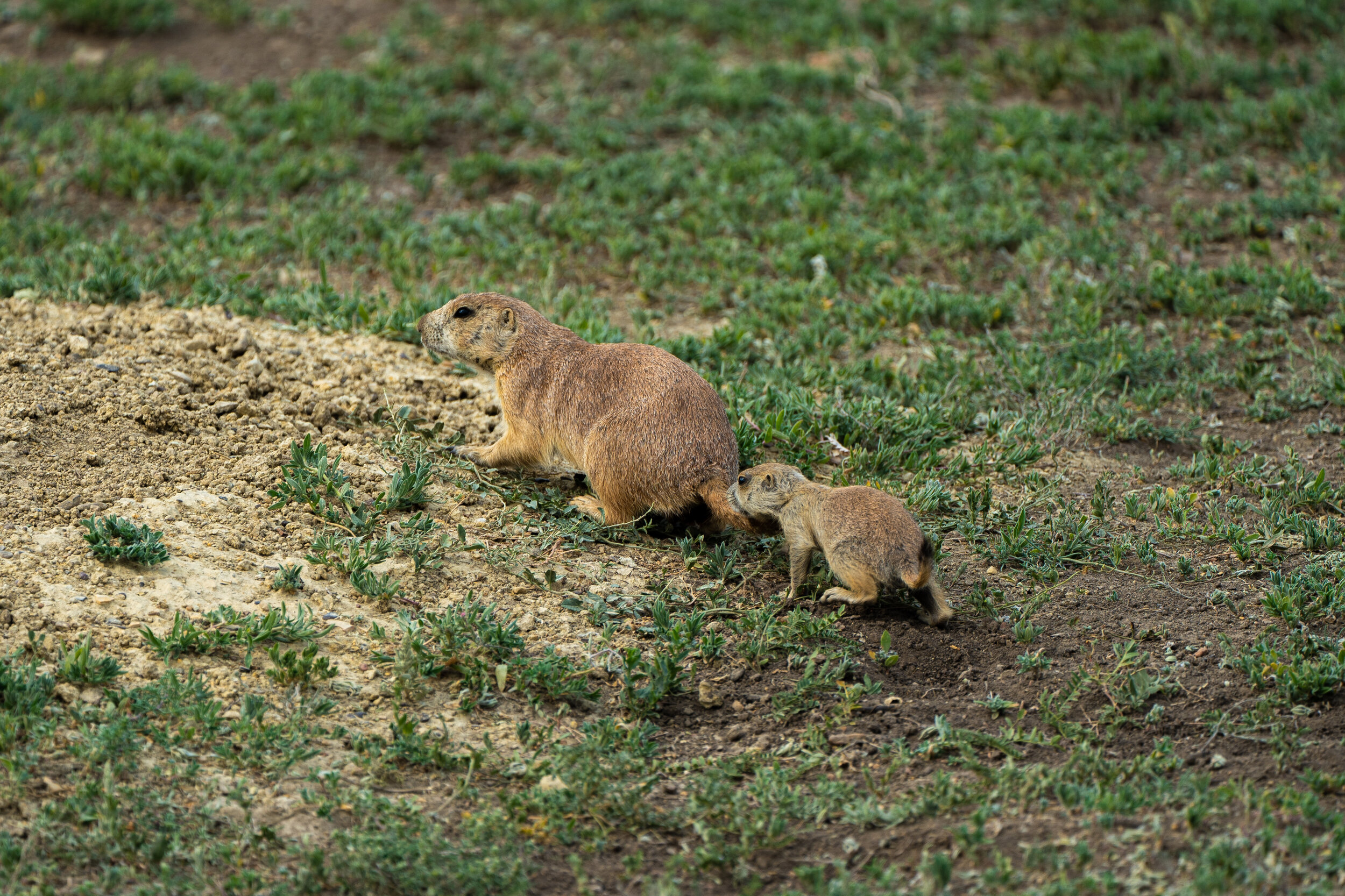
This sweet baby prarie dog didn’t let much space get between him and his mother.

This wild steer was standing on the side of the road. I opened the sun roof to take a picture and he didn’t seem to mind—until he did! He charged the truck and Craig had to hit the gas to move out of the way. Yikes! 😲

Did you know the Teddy Bear began with President Roosevelt? In 1902, the President was on a bear hunting trip in Mississippi, and unlike other hunters in the group, he had not located a single bear. His assistants, trying to help him, cornered and tied a black bear to a tree. They called Roosevelt over to shoot it. Viewing this as extremely unsportsmanlike, Roosevelt refused. The story spread quickly as newspaper articles recounted the story of the president—the big game hunter, who refused to shoot a bear. In the Washington Post, this cartoon satirized the incident. A candy shop owner saw the cartoon and made stuffed bears and dedicated them to the president who refused to shoot a bear. He called it 'Teddy's Bear.' The bears sold like hotcakes. After receiving Roosevelt's permission to use his name, the shop owner mass-produced the toy bears, which were so popular that he soon founded a toy company!
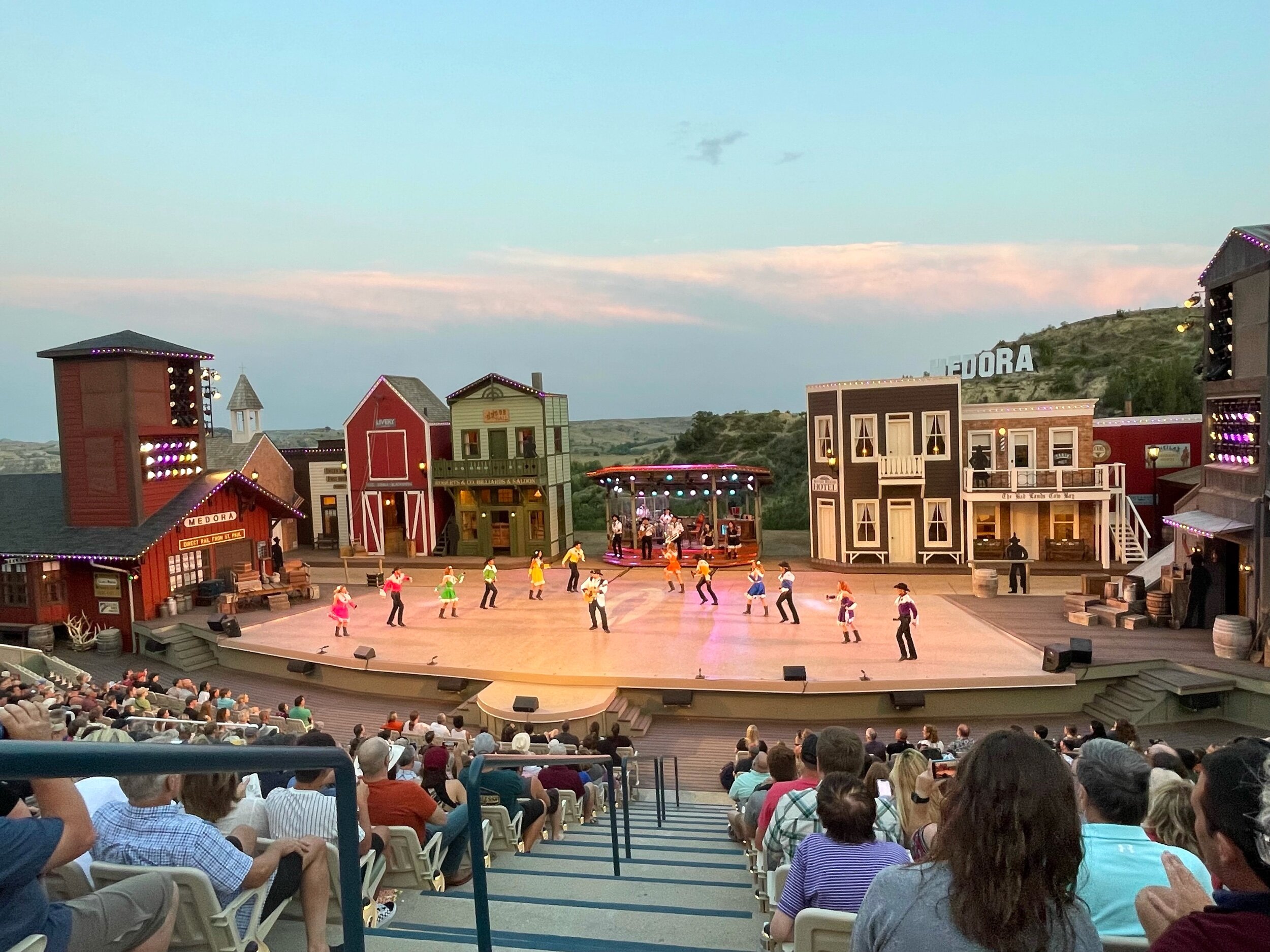
I would say going to the Medora Musical is one of the coolest things we've done this year. (Craig would likely pick something else 😂) While enjoying the “rootin'-tootinest, boot-scootinest show in all the Midwest,” we could see past the stage and into the hills and badlands of Medora, the town just a few miles from where Teddy Roosevelt once lived.

The outdoor entertainment began around dusk with a cool breeze, perfect temperatures, and low humidity, and ended long after sunset with a full moon hanging over us. It was lovely!
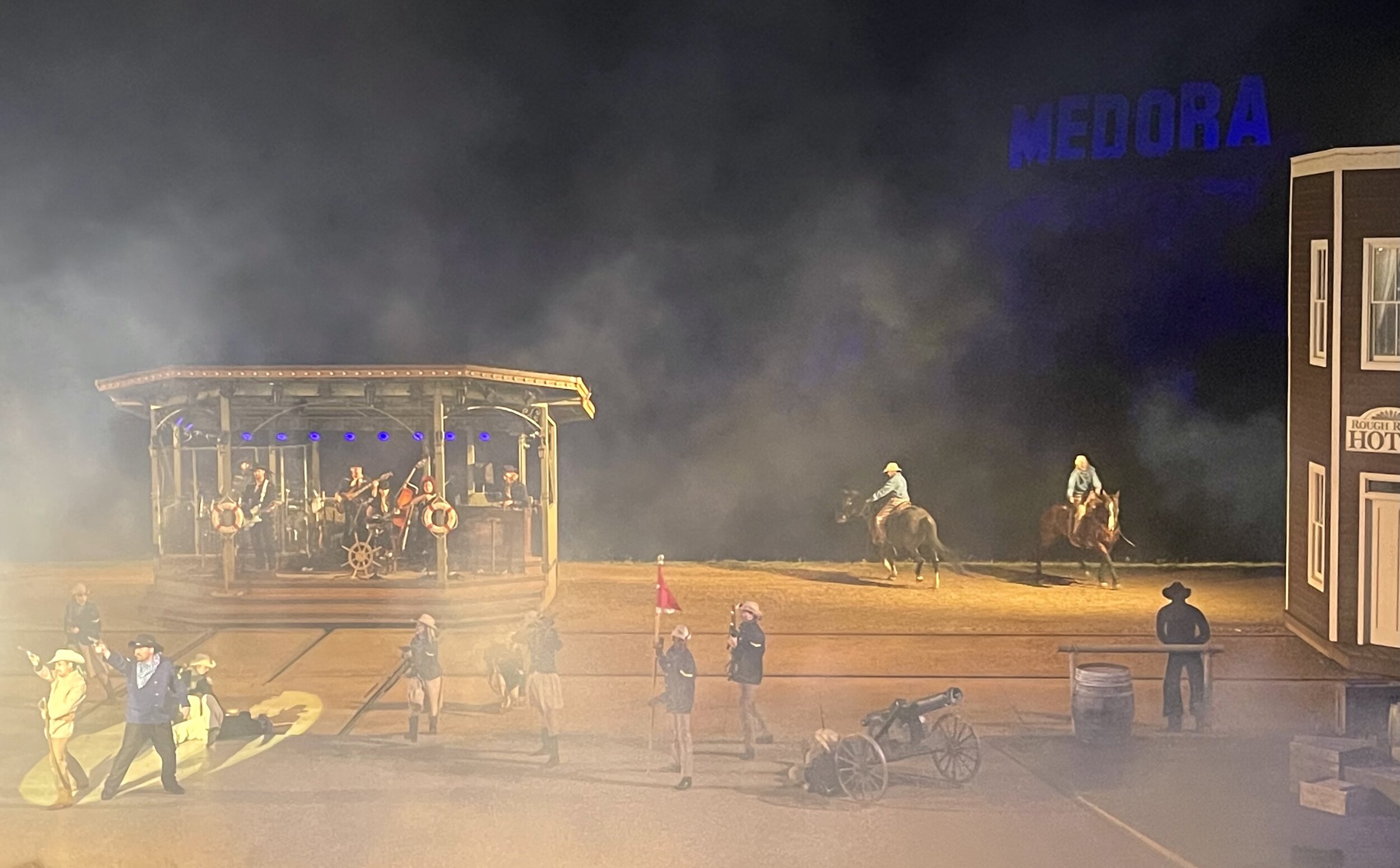
The elaborate stage changes were an amazing aspect of the show. The theatrical "town" buildings could slide back and forth on rails for various scenes and skits, with an actual dirt trail behind the stage, where real horses can be a part of the show.
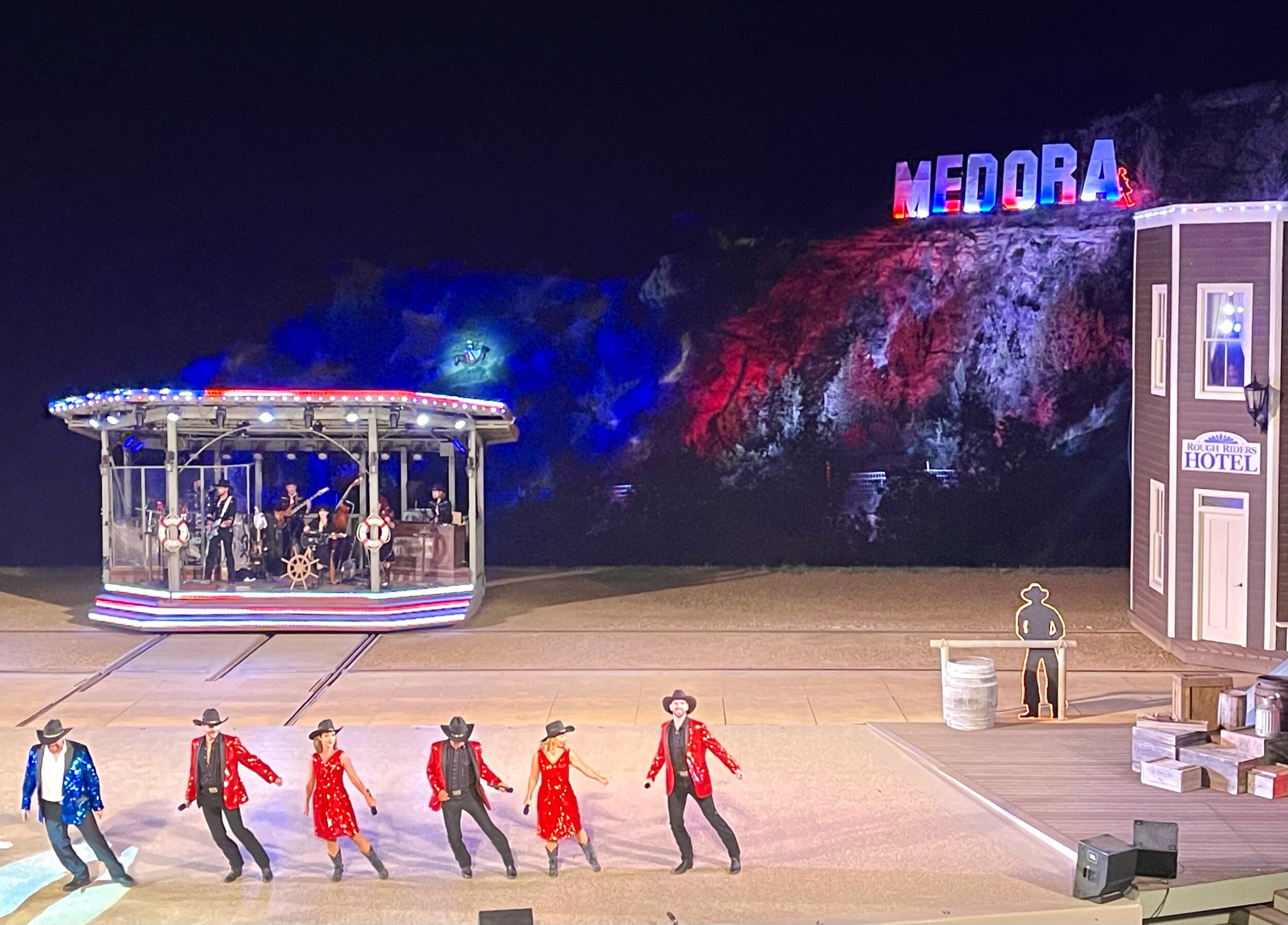
During the grand finale, a lone horse and its rider (spotlighted just above the smaller band stage in this photo) ascended an actual mountain behind the set to the top of the MEDORA sign. Meanwhile, the rest of the cast sang, played, and danced their hearts out in an "ode to patriotism, Theodore Roosevelt, and the Great American West!” I don’t know if we will ever see a another show that includes dancers, cloggers, horses, dirt trails, real mountains and an open night sky, but I hope we do. 🤠🐎🐎🤠
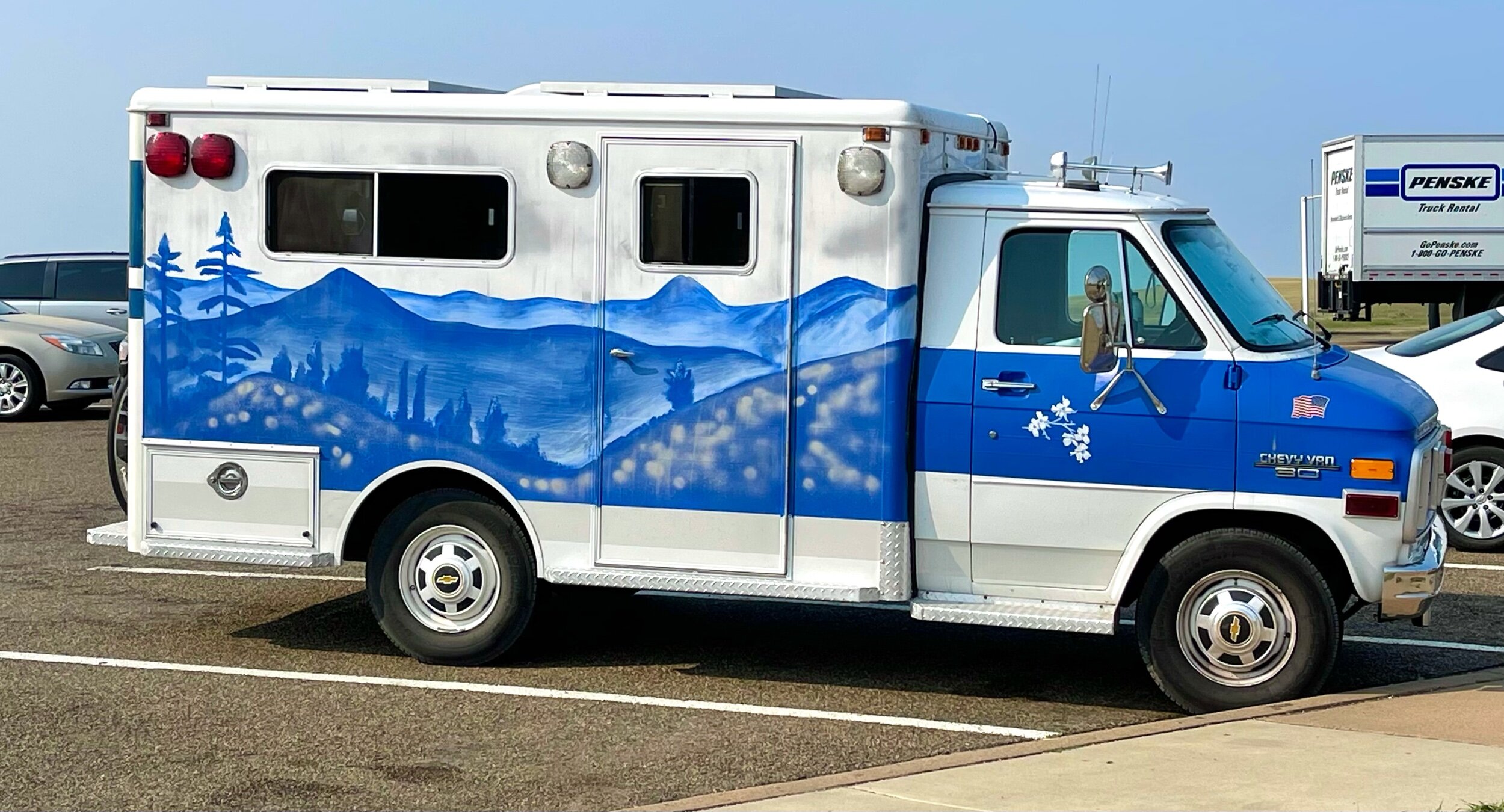
We haven’t shared any original campers along our travels recently…people continue to get more and more creative these days! 🚑
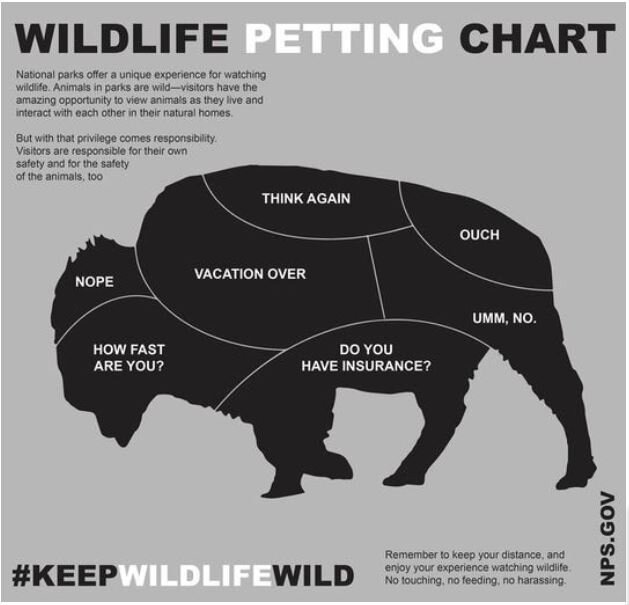
Well, that wraps up this portion of our traveIs! We thought we’d leave you with this fun National Park System wildlife petting guide 🤣🐻 ….and another video with more pictures. 😁 Thanks for watching! See you soon! 🧡

